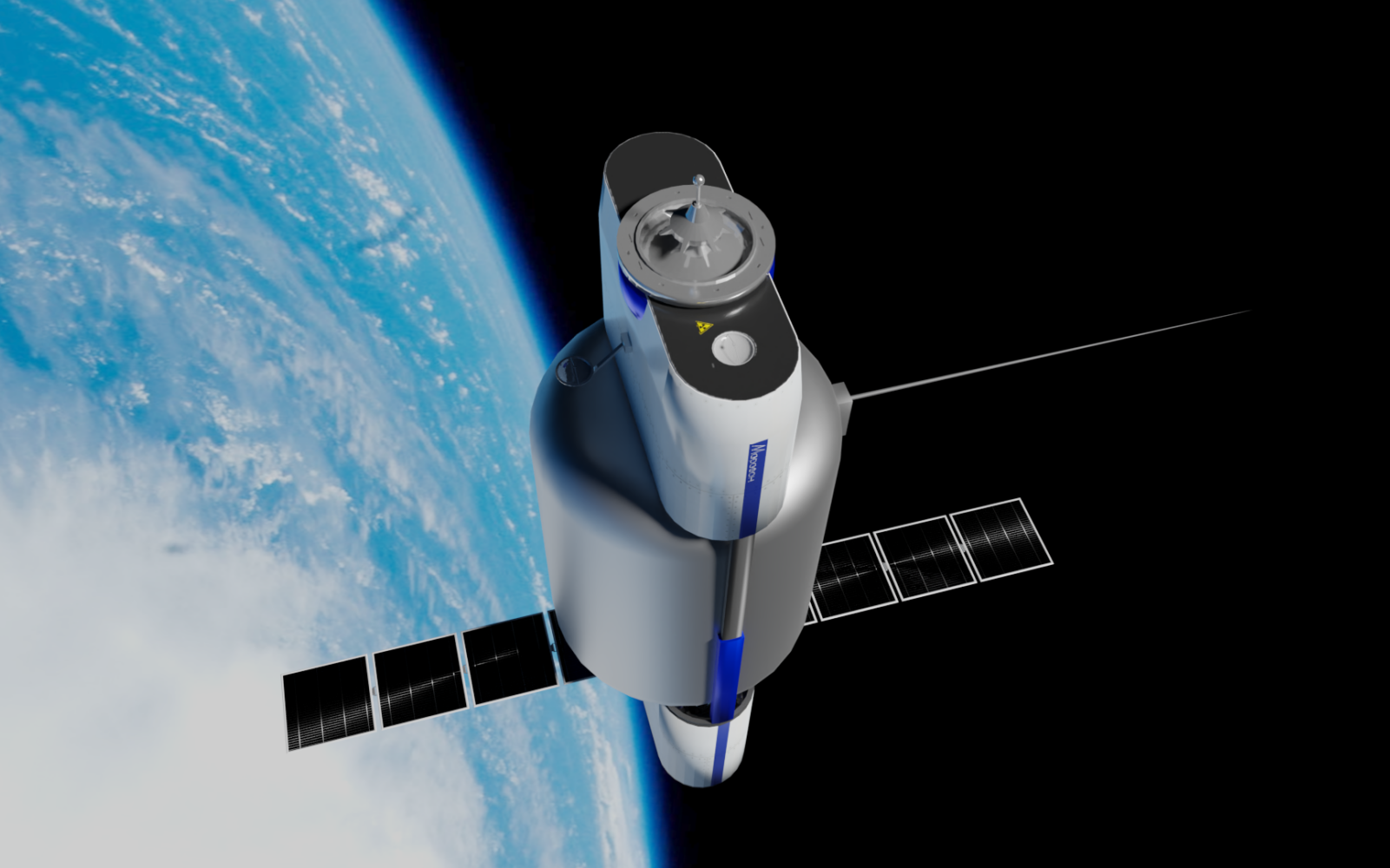MAI developed a new model of an interplanetary tug

Cosmonautics more often nowadays is faced with the task of towing massive cargo from one orbit or even planet to another. MAI developed a mathematical model of the interorbital (interplanetary) tug of modular design – named “Marathon” – to solve this problem.
This is a specialized spacecraft consisting of two parts: an unmanned spacecraft (reusable) and a tanker (disposable). The first of them is named "Marathon" – this is a tugboat, which is once launched into orbit on a rocket and stays there for many years. The tanker will be scrapped after performing its function. The main purpose of the tug is to provide fuel for up to 20 tons of orbital stations in manned lunar missions. However, the developers say that "Marathon" will be able to transport technical cargo in outer space.
Two students of the 2nd year of the master's program in the "Missile systems and astronautics" direction of the department "Launch complexes" of the Institute No. 12 of the MAI German Solovyov and Alexander Gnatyuk are working on the project. The work is supervised by Alexey Gonchar, Doctor of Technical Sciences, Honored Tester of Space Technology, Professor of the Department of Launch Complexes.
In the process of working on the project, the scientists carried out energy-mass, ballistic and strength calculations for the key components of the space tug. Three-dimensional models have been developed to refine the layout and determine preliminary design parameters for their further development. The work carried out will make it possible to create a multifunctional base platform and a wide range of devices. The requirements for possible scientific equipment on board, manipulators, gripping and docking devices, and the size of solar panels for power were considered.
– Of course, the idea of creating interorbital tugs is not new, even within the framework of lunar programs. Industry organizations have been and are still now working on the creation of these products based on various physical principles of propulsion systems. The main advantage of our project can be considered the possibility of docking with orbital stations, since there are no powerful sources of ionizing radiation on board,” says German Soloviev, the project participant, MAI student.
For one flight to the orbit of the Moon and back, "Marathon" "eats" (consumes) 22 tons of fuel. On the other hand, “Marathon” will deliver cargo over a distance of 400,000 km (flight trajectory to the Moon) in only five days.
Another feature of the development is the simplification and reduction in the cost of the docking process.
“Usually, the docking of the space station and the ship takes place according to the principle of mutual measurements, which greatly complicates the radio equipment of the target. Our tug will dock using its own, one-way measurements. This system has already been proposed by NASA as part of the mission to return the Martian soil, but there it is built exclusively on optical and laser means. We focus on the radar search system. So it is enough to install a simple transmitter with a power of several watts on the tanker, which will be captured at a distance of 40-50 km by means of a tug. Installation of expensive measuring equipment on a disposable tanker is not required, says German Soloviev.
"Marathon" consists of two half-parts connected with a movable mechanism, within which the payload is placed. Two telescopic supports make it possible to greatly reduce the longitudinal length of the product during launch and deploy it directly in orbit. The cross section has an elongated shape. This makes it possible to launch two products at once under one head fairing of a promising heavy-class launch vehicle or one on a medium-class launch vehicle.